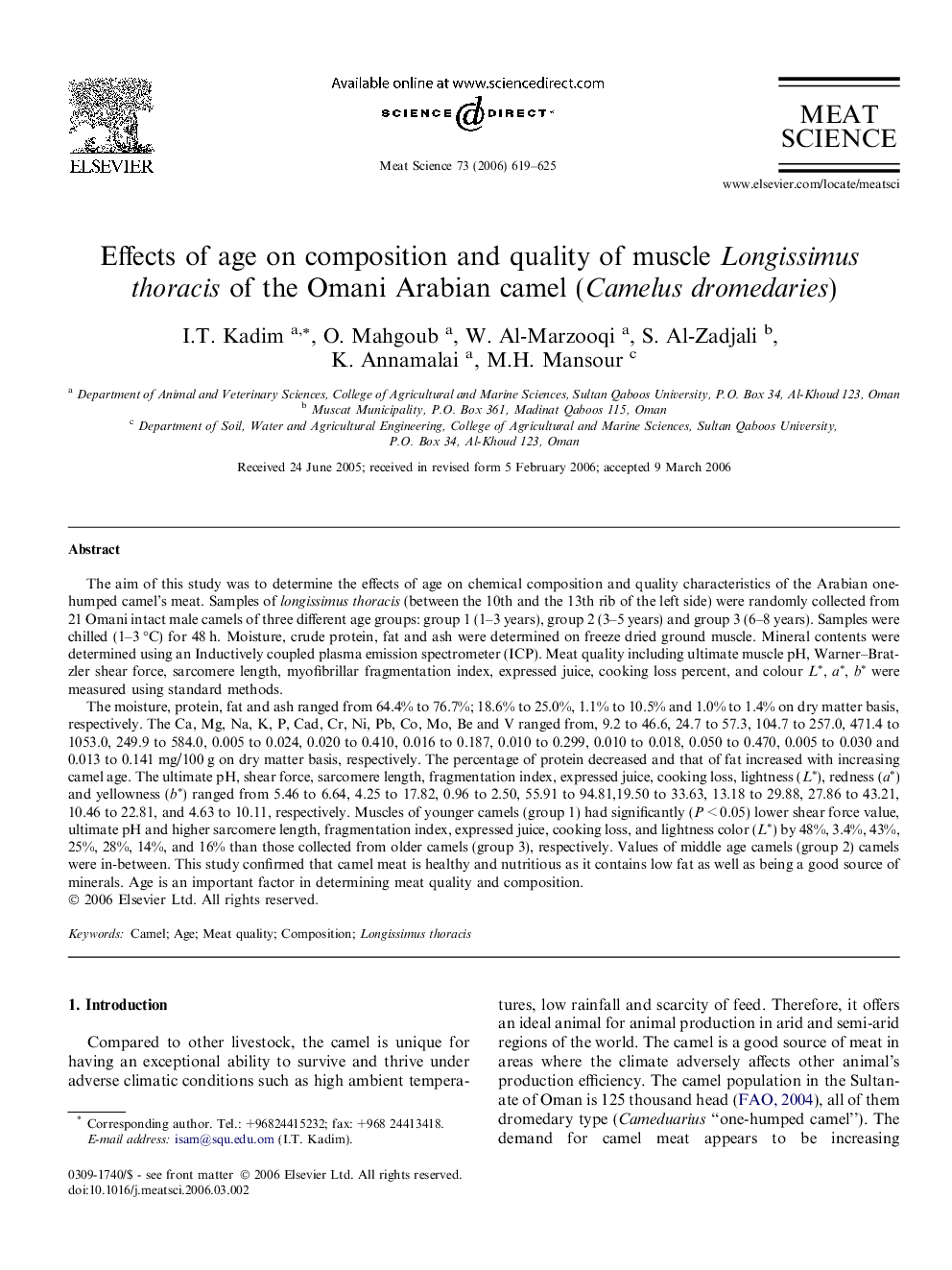| کد مقاله | کد نشریه | سال انتشار | مقاله انگلیسی | نسخه تمام متن |
|---|---|---|---|---|
| 2452248 | 1109714 | 2006 | 7 صفحه PDF | دانلود رایگان |

The aim of this study was to determine the effects of age on chemical composition and quality characteristics of the Arabian one-humped camel’s meat. Samples of longissimus thoracis (between the 10th and the 13th rib of the left side) were randomly collected from 21 Omani intact male camels of three different age groups: group 1 (1–3 years), group 2 (3–5 years) and group 3 (6–8 years). Samples were chilled (1–3 °C) for 48 h. Moisture, crude protein, fat and ash were determined on freeze dried ground muscle. Mineral contents were determined using an Inductively coupled plasma emission spectrometer (ICP). Meat quality including ultimate muscle pH, Warner–Bratzler shear force, sarcomere length, myofibrillar fragmentation index, expressed juice, cooking loss percent, and colour L∗, a∗, b∗ were measured using standard methods.The moisture, protein, fat and ash ranged from 64.4% to 76.7%; 18.6% to 25.0%, 1.1% to 10.5% and 1.0% to 1.4% on dry matter basis, respectively. The Ca, Mg, Na, K, P, Cad, Cr, Ni, Pb, Co, Mo, Be and V ranged from, 9.2 to 46.6, 24.7 to 57.3, 104.7 to 257.0, 471.4 to 1053.0, 249.9 to 584.0, 0.005 to 0.024, 0.020 to 0.410, 0.016 to 0.187, 0.010 to 0.299, 0.010 to 0.018, 0.050 to 0.470, 0.005 to 0.030 and 0.013 to 0.141 mg/100 g on dry matter basis, respectively. The percentage of protein decreased and that of fat increased with increasing camel age. The ultimate pH, shear force, sarcomere length, fragmentation index, expressed juice, cooking loss, lightness (L∗), redness (a∗) and yellowness (b∗) ranged from 5.46 to 6.64, 4.25 to 17.82, 0.96 to 2.50, 55.91 to 94.81,19.50 to 33.63, 13.18 to 29.88, 27.86 to 43.21, 10.46 to 22.81, and 4.63 to 10.11, respectively. Muscles of younger camels (group 1) had significantly (P < 0.05) lower shear force value, ultimate pH and higher sarcomere length, fragmentation index, expressed juice, cooking loss, and lightness color (L∗) by 48%, 3.4%, 43%, 25%, 28%, 14%, and 16% than those collected from older camels (group 3), respectively. Values of middle age camels (group 2) camels were in-between. This study confirmed that camel meat is healthy and nutritious as it contains low fat as well as being a good source of minerals. Age is an important factor in determining meat quality and composition.
Journal: Meat Science - Volume 73, Issue 4, August 2006, Pages 619–625